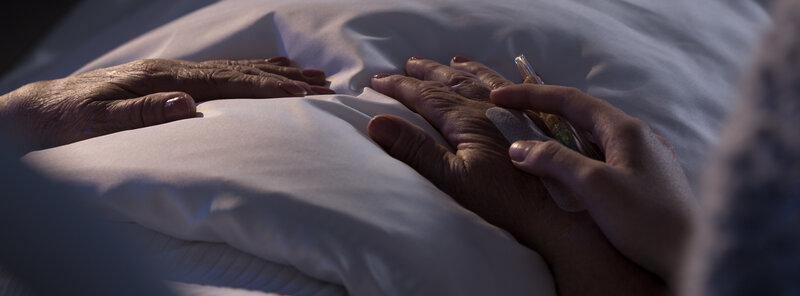Embracing Death As Beautiful

Most people who work in the realm of death, dying, and grief would agree that Americans are primarily a death-phobic culture. People fear death, often refusing to talk about it, perpetually putting off making end-of-life plans, and have never seen a person die. As a result, the idea that “death is beautiful” can seem downright impossible.
Moving Toward The Beautiful Sides Of Embracing Death
While it’s true that the physical aspects of death and dying may not always be pretty, and some are downright unappealing, the bigger-picture death process can be incredibly beautiful. However, in our experience as hospice and palliative care providers, we are very clear on what it takes to move toward the idea of embracing death as beautiful. We certainly don’t want to wax poetic here; this is serious stuff. So, if the word “beautiful” repels you, we invite you to replace that with another word, like Natural, Transcendent, Sacred, Meaningful, or another option that resonates, so you don’t get hung up on the semantics.Create an end of life plan before you stare death in the face
Most people wait far too long to create an end-of-life plan. In a best-case scenario, people would create end-of-life plans in their early 20s and then revise them every few years and then every year or so after their 50s. Comprehensive end-of-life plans gently direct you through the most critical questions around advanced medical directives, disease treatment preferences, and clarity around when to cease treatment. They also include questions around where and how you prefer to die. These plans are personally created to honor your values. They also offer great solace to loved ones who can follow your wishes if an unanticipated accident or turn of events renders you incapable of speaking your wishes. So, by creating detailed end-of-life plans shared with close family members and healthcare providers, most individuals feel a great weight lifted from their shoulders, making death feel less stressful or full of unknowns.Gain an understanding of what happens to the body when we die
The number one thing we hear from patients about their transition to hospice is, “I am afraid of dying…” And pain is a leading cause of that fear. The reality is that dying is not painful. The conditions leading to your death may be painful (injury, disease effects, etc.), but those are all manageable. The media has done a very poor job of showing what the real dying process is like. They make it look fairly short and tidy, with most people uttering memorable or inspiring “last words.” Most of us don’t die that way at all. And while there can be scary or unpleasant moments, those are manageable when people understand what happens to the body when it dies.Connect with palliative and hospice providers sooner rather than later
If you are diagnosed with a terminal illness, connect with local hospice providers. While some people are completely cured, most experience treatments that allow them to live longer – but they’re likely to die from the disease. Connecting with hospice and palliative care providers sooner rather than later means you have information about all of the services they offer and what hospice service is like. That information is typically very comforting, and while you may not want to enlist their services now, you’ll have an idea of which hospice service to call when you decide to end treatment. The sooner patients and families enlist hospice support, the better quality of life they experience.Live daily life to its fullest
This does not mean you need to sell everything you own and travel the world (although it might, if that was always your lifeline dream). On the contrary, the thing that creates the most pain and discomfort around dying, once pain management is established, are all of the “things left undone.” Patients’ dying process is often complicated and made darker by:- Regrets
- Things they wish they’d done that they never did
- Severed or strained relationships
- Not having the courage or ability to express regrets, apologies, or unspoken anger/hurt